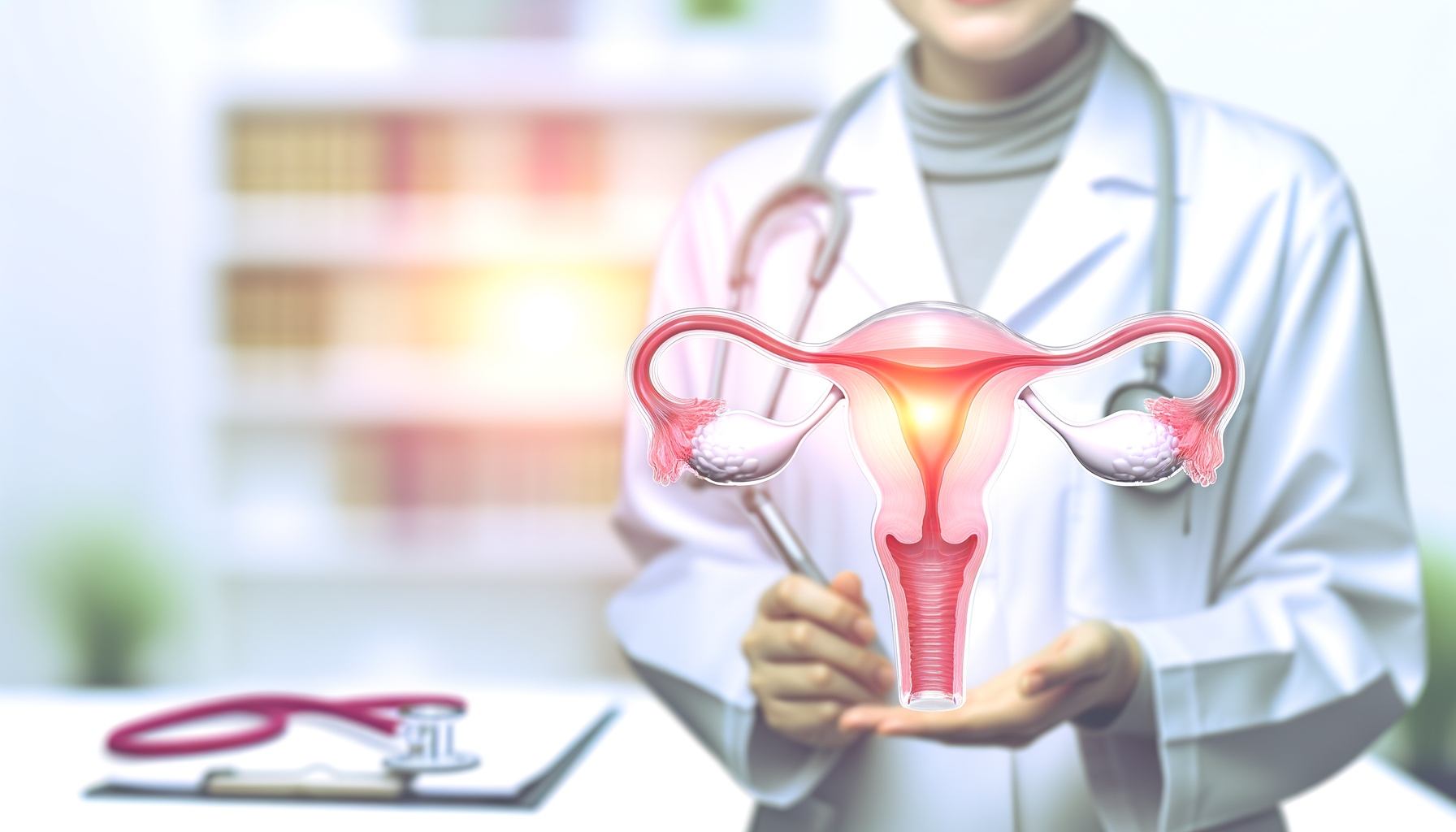A retroverted uterus, also known as a tipped or tilted uterus, is a common anatomical variation where the uterus curves backward at the cervix towards the spine, instead of the more common forward tilt towards the abdomen. This condition is a normal variation of pelvic anatomy, affecting approximately 25% of women. The uterus is a pear-shaped organ located in the pelvis between the bladder and rectum, and in the case of a retroverted uterus, the top of the uterus (fundus) is aimed toward the rectum, while the cervix points towards the belly.
Comparison with Other Uterine Tilts
The position of the uterus within the pelvis can vary among individuals. The most common position is the anteverted uterus, where the uterus tilts forward, lying over the bladder with the fundus towards the abdominal wall. In contrast, a retroverted uterus tilts backward, pressing against the rectum. Another less common position is the upright uterus, where the fundus is straight up. It is important to note that these variations in uterine position are typically considered normal and do not usually affect fertility or health.
Prevalence and Genetic Factors
It is estimated that about one in four or five women have a retroverted uterus. For many, this is a genetic trait they are born with. However, it can also be acquired due to various factors that may alter the position of the uterus during a woman’s life. The prevalence of this condition suggests that it is a standard variation within the population and not an abnormality.
Symptomatology and Diagnosis
Most women with a retroverted uterus experience no symptoms and may remain unaware of their condition unless it is identified during a pelvic exam or ultrasound. When symptoms do occur, they can include pain during sexual intercourse, menstrual pain, difficulty inserting tampons, increased urinary frequency, mild incontinence, and a protrusion of the lower abdomen. These symptoms can sometimes be associated with other conditions like endometriosis or pelvic inflammatory disease (PID), which may also cause the uterus to become retroverted.
Diagnosis of a retroverted uterus is typically made during a routine pelvic examination. If a woman presents with symptoms, healthcare providers may conduct further tests to determine if an underlying condition is contributing to the retroverted position of the uterus. In cases where the retroverted uterus is symptomatic, treatment options are available, ranging from exercises to surgical interventions, depending on the severity and underlying cause of the symptoms.
Causes of a Retroverted Uterus
Congenital Factors
A retroverted uterus can be a natural anatomical variation with some women born with this condition. It is estimated that approximately 25% of women have a uterus that tilts backward at the cervix. This congenital factor is often a benign variation and does not typically lead to any health complications or symptoms.
Pelvic Scarring and Adhesions
Scarring and adhesions in the pelvic area can cause a uterus that was once in a normal position to become retroverted. These adhesions can be the result of various factors, including:
- Endometriosis: The growth of endometrial cells outside the uterus can create scar tissue that anchors the uterus in a backward tilt.
- Pelvic Inflammatory Disease (PID): Untreated PID can lead to scarring, which may pull the uterus into a retroverted position.
- Prior pelvic surgery: Surgical procedures in the pelvic area can cause adhesions that result in a retroverted uterus.
Associated Conditions
There are several conditions associated with a retroverted uterus that can impact its position:
- Fibroids: Non-cancerous growths within the uterus can distort its shape and cause it to tilt backward.
- Endometriosis: As mentioned, endometriosis can lead to a retroverted uterus due to the formation of scar tissue.
- Pelvic Inflammatory Disease: Chronic PID can result in scarring that affects the position of the uterus.
It is important to note that while these conditions are associated with a retroverted uterus, they are not necessarily the cause of infertility or pelvic pain.
Impact of Pregnancy and Childbirth
Pregnancy and childbirth can have a lasting impact on the position of the uterus. The ligaments that hold the uterus in place can become overstretched during pregnancy. In some cases, they may not return to their pre-pregnancy tightness, allowing the uterus to tip backward. While the uterus often returns to a forward tilt after childbirth, it may remain retroverted in some women.
In conclusion, a retroverted uterus can be the result of congenital factors, pelvic scarring and adhesions, associated conditions, or the impact of pregnancy and childbirth. In most instances, a retroverted uterus is a benign condition that does not require treatment. However, if associated with other conditions like endometriosis or fibroids, it may lead to symptoms that necessitate medical intervention.

THEN IT CONTAINS TOXIC CHEMICALS. WHY RISK IT GETTING SICK? GO CHEMICAL FREE.
Retroverted Uterus and Fertility
General Fertility Considerations
A retroverted uterus, also known as a tilted or tipped uterus, is a common anatomical variation where the uterus tilts backward at the cervix towards the spine. This condition is present in approximately 20-25% of women and is often a benign variation that does not interfere with fertility. The position of the uterus typically has no impact on the ability of sperm to reach the egg, and therefore, does not cause infertility. However, it is important to note that while the retroverted position itself is not a direct cause of fertility issues, it may be associated with other conditions that could affect reproductive health.
Retroverted Uterus and Pregnancy Complications
During pregnancy, a retroverted uterus usually corrects itself as the uterus enlarges and moves into a more forward position by the second trimester. Nevertheless, in rare cases, the uterus may become incarcerated, meaning it becomes trapped in the pelvis. This can lead to symptoms such as difficulty urinating, constipation, and pelvic pain. Incarceration of the uterus is estimated to occur in about 1 in 3,000 to 1 in 10,000 pregnancies. If diagnosed early, this condition can often be managed successfully, reducing the risk of miscarriage or other complications.
Misconceptions and Clarifications
There are several misconceptions surrounding a retroverted uterus and its impact on fertility and pregnancy. It is crucial to clarify that a retroverted uterus on its own does not increase the risk of infertility. Conditions such as endometriosis, adenomyosis, uterine fibroids, and pelvic inflammatory disease (PID) are often associated with a retroverted uterus and can contribute to fertility challenges. These conditions, rather than the position of the uterus, may necessitate medical intervention to improve fertility outcomes.
For those trying to conceive with a retroverted uterus, there are no specific strategies required beyond the general recommendations for achieving pregnancy. This includes tracking ovulation, maintaining a healthy lifestyle, and consulting a healthcare provider if conception does not occur after a year of trying for women under 35, or six months for women 35 and older.
In summary, while a retroverted uterus is a variation of normal anatomy, it is not a barrier to conception or a healthy pregnancy. Women with this condition can conceive naturally and have a normal pregnancy and childbirth. It is the potential associated conditions, not the tilt of the uterus, that may require medical attention and treatment to ensure fertility and a healthy pregnancy.
Pregnancy Management with a Retroverted Uterus
First Trimester Challenges
During the first trimester, a retroverted uterus may present certain challenges. The uterus, tilted towards the spine, can exert additional pressure on the bladder, potentially leading to increased urinary frequency or incontinence, as well as difficulty urinating. Some women may also experience back pain as the uterus grows. Moreover, the positioning of the uterus can make it more challenging to visualize via abdominal ultrasound, necessitating the use of transvaginal ultrasounds to monitor the progression of the pregnancy.
Mid-Pregnancy Uterine Position Shift
Typically, by the end of the first trimester, around weeks 10 to 12, the expanding uterus begins to straighten and elevate out of the pelvis. This positional shift usually results in the uterus adopting a more anteverted orientation. For most women with a retroverted uterus, this natural repositioning occurs without intervention and alleviates earlier symptoms related to the uterus’s tilt.
Potential for Incarcerated Uterus
However, in rare cases, the uterus may not reposition itself due to adhesions or scar tissue anchoring it within the pelvis, leading to a condition known as an incarcerated uterus. This can increase the risk of miscarriage and cause symptoms such as an inability to urinate, pain in the abdomen or near the rectum, constipation, and incontinence. If a woman experiences these symptoms, it is crucial to seek medical attention promptly. An incarcerated uterus is typically diagnosed through a pelvic exam or ultrasound and can often be corrected if identified early.
Monitoring and Ultrasound Considerations
Throughout pregnancy, especially in the first trimester, careful monitoring is essential for women with a retroverted uterus. Healthcare providers may rely more heavily on transvaginal ultrasounds to obtain clear images of the fetus and assess its development. As the pregnancy progresses and the uterus enlarges and shifts position, abdominal ultrasounds become more feasible. It is important for pregnant women with a retroverted uterus to maintain regular prenatal appointments to ensure any potential complications are identified and managed effectively.
Overall, while a retroverted uterus can present some unique considerations during pregnancy, with proper monitoring and care, most women can expect a normal pregnancy and delivery.
Impact on Sexual Health
Sexual Intercourse and Discomfort
For some women with a retroverted uterus, sexual intercourse can be a source of discomfort or pain, a condition known as dyspareunia. This discomfort is often due to the position of the uterus, which can cause the cervix or uterus to be bumped during intercourse, particularly in positions where penetration is deep. The pain may vary from mild to severe and can be a significant concern for affected individuals, potentially impacting their sexual satisfaction and emotional well-being.
Positional Adjustments and Relief
One of the simplest and most effective ways to manage discomfort during intercourse is to experiment with different sexual positions. Positions that allow for shallower penetration or give the woman more control over the depth and angle of penetration, such as the woman on top or side-by-side positions, may help reduce discomfort. Additionally, the use of pillows for support and angling the pelvis can also be beneficial. It is important for partners to communicate openly about what feels comfortable and what does not, as mutual understanding and patience are key to a fulfilling sexual relationship.
Communication with Healthcare Providers
Open dialogue with healthcare providers is crucial for women experiencing sexual discomfort associated with a retroverted uterus. A thorough medical evaluation can help rule out other conditions that may be causing pain, such as endometriosis or fibroids. Healthcare providers can also offer guidance on exercises, such as Kegels or pelvic floor muscle training, which may help strengthen the supporting structures of the uterus. In some cases, a pessary device may be recommended to support the uterus in a more favorable position. For persistent or severe cases, surgical options may be discussed. It is essential for women to feel empowered to discuss their sexual health with their providers and explore the available treatment options to improve their quality of life.
Treatment Options for Symptomatic Cases
When Treatment is Necessary
While a retroverted uterus is often asymptomatic and requires no treatment, there are instances when intervention may be necessary. Treatment is typically considered when a woman experiences symptoms that affect her quality of life, such as painful sexual intercourse, difficulty with urination, or chronic pelvic pain. These symptoms may be indicative of underlying conditions like endometriosis, fibroids, or pelvic inflammatory disease (PID), which can cause the uterus to become retroverted. In such cases, addressing the primary condition often alleviates the associated symptoms.
Non-Surgical Interventions
For women experiencing discomfort or other symptoms from a retroverted uterus, non-surgical treatments are often the first line of management. These may include:
- Exercises: Pelvic floor exercises, such as Kegels, can strengthen the muscles and ligaments that support the uterus, potentially reducing symptoms. However, these exercises are unlikely to be effective if the uterus is fixed in place by scarring or adhesions.
- Pessary Device: A pessary is a silicone or plastic device inserted into the vagina to support the uterus. It can be a temporary or permanent solution but may increase the risk of infection if used long-term. Additionally, some women and their partners may find it uncomfortable during sexual intercourse.
It is important to note that these interventions may not be suitable for all women, particularly if the retroversion is due to structural issues that cannot be corrected with conservative management.
Surgical Techniques and Considerations
When non-surgical treatments are ineffective or inappropriate, surgery may be considered. Surgical options include:
- Uterine Suspension Procedure: This surgery can be performed laparoscopically, vaginally, or abdominally and aims to reposition the uterus into a forward tilt.
- Uplift Procedure: A laparoscopic surgery that is relatively quick and aims to correct the position of the uterus.
Before opting for surgery, it is crucial to consider the potential risks and benefits. Surgery should be reserved for cases where the symptoms significantly impair the patient’s quality of life and where other treatments have failed. It is also essential to discuss fertility plans with a healthcare provider, as some surgical interventions may affect future pregnancies.
In the case of an incarcerated uterus during pregnancy, treatment may involve hospitalization, the insertion of a urinary catheter, and pelvic exercises to help free the uterus. However, this condition is rare and typically resolves with conservative measures.
Ultimately, the choice of treatment should be a collaborative decision between the patient and her healthcare provider, taking into account the severity of symptoms, underlying causes, and the woman’s reproductive plans.

Conclusion: Living with a Retroverted Uterus
Quality of Life and Symptom Management
For many women, living with a retroverted uterus is a benign condition that does not interfere with their daily lives. However, some may experience symptoms such as pelvic pain, discomfort during sexual intercourse, or difficulty with tampon insertion. Managing these symptoms effectively is crucial for maintaining a good quality of life. Non-invasive measures such as pelvic floor exercises, pain relief medications, and the use of heat packs can provide relief. Additionally, women experiencing discomfort during intercourse may find relief by experimenting with different positions or using lubricants. It is important for women to be proactive in managing their symptoms and to seek support from healthcare providers when necessary.
Importance of Medical Consultation
Regular medical consultations are essential for women with a retroverted uterus, especially for those experiencing symptoms or planning to conceive. Healthcare providers can offer valuable advice on symptom management and fertility considerations. They can also perform routine pelvic exams and ultrasounds to monitor the condition and rule out associated disorders like endometriosis or fibroids. For women trying to conceive, medical consultation becomes even more critical, as it can help address any potential fertility issues and ensure a healthy pregnancy.
Future Research and Perspectives
While a retroverted uterus is a common anatomical variation, there is still much to learn about its long-term implications on women’s health. Future research should focus on understanding the potential links between uterine position and pelvic health disorders, as well as the efficacy of various treatment options. Advancements in medical technology and a deeper understanding of reproductive anatomy may lead to improved management strategies for symptomatic cases. Moreover, increased awareness and education about the condition can help dispel myths and provide reassurance to women living with a retroverted uterus.
In conclusion, while a retroverted uterus is typically a benign condition, it is important for affected women to be aware of their bodies and to communicate openly with healthcare providers. By managing symptoms effectively, seeking regular medical advice, and staying informed about new research and treatment options, women with a retroverted uterus can lead healthy and fulfilling lives.


















